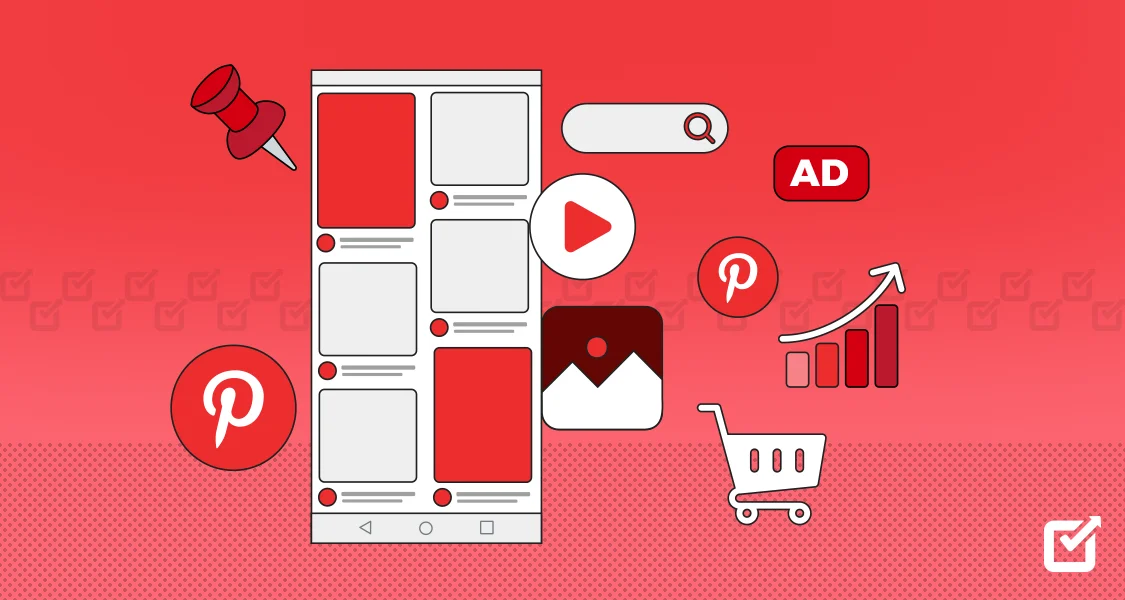With over 2.9 billion Facebook users, it’s like almost everyone is trying to grab attention, and standing out can be a challenge.
You’ve got to be smart, strategic, and, most importantly, know what your competition is doing.
Think about this: about 93% of marketers are already using Facebook ads, making it the go-to platform for paid promotions.
So, how do you ensure you’re not just another brand in the crowd? That’s where Facebook’s competitor analysis comes in.
With tools like Social Champ’s competitor analysis, you can monitor your competitors’ posts, engagement with their audience, and ad campaigns.
This way, you can spot the opportunities they’re missing and fine-tune your strategy to achieve better results.
Want to know more?
We’ll walk you through everything you need to know to get the upper hand on Facebook—from tracking your competitors’ moves to making smart changes to your game plan.
Let’s get started!

Dominate Your Facebook Competition with Social Champ!
Easily analyze your rivals’ strategies, engagement rates, and top-performing content. All in one place!
Short Summary
- Facebook has over 2.9 billion users, making it a highly competitive platform for marketers.
- Competitor analysis is key to standing out on Facebook by understanding competitors’ strategies and identifying opportunities.
- Tools like Social Champ provide insights into competitors’ content, audience engagement, and ad strategies to help fine-tune your approach.
- Facebook competitor analysis helps identify market gaps, benchmark performance, and optimize content strategies.
- Understanding competitors’ audience demographics and interests allows for refined targeting and better engagement.
- Competitor analysis keeps you ahead of trends, ensures efficient resource allocation, and improves customer service strategies.
- Conducting regular competitor analysis aids in anticipating market changes and making data-driven decisions.
- Effective tools for Facebook competitor analysis include Social Champ, BigSpy, Sprout Social, Fanpage Karma, and Emplifi, each offering unique features and insights.
- Analyzing competitors involves tracking key metrics like follower growth, engagement rates, content performance, and ad strategies to inform your marketing efforts.
Why Facebook Competitor Analysis Is Crucial for Your Marketing Strategy
Analyzing your competitors on Facebook is essential for crafting an effective social media marketing strategy. Here’s why:
- Spot Market Gaps: Identify opportunities your competitors are missing. This helps you target untapped audiences or address overlooked issues.
- Benchmark Performance: Compare your metrics with competitors to set realistic goals and measure progress.
- Optimize Content: Learn from your competitors’ content successes and failures to create more engaging posts.
- Refine Targeting: Discover new audience segments and fine-tune your targeting based on competitor insights.
- Stay Trendy: Spot and adopt emerging trends faster by monitoring competitors.
- Efficient Resource Allocation: Invest in areas where you can excel and avoid oversaturated markets.
- Enhance Customer Service: Pick up best practices from how competitors handle customer interactions.
- Find Partnerships: Identify potential collaboration opportunities with complementary businesses or influencers.
- Clarify Your Unique Selling Proposition: Highlight what sets your brand apart based on competitor strengths and weaknesses.
- Anticipate Market Changes: Predict shifts in the market by observing competitors’ activities and adapt your strategy accordingly.
Regular competitor analysis will help you make informed decisions, stay ahead of trends, and effectively differentiate your brand. The goal is to learn and innovate, not imitate.
Featured Article: Facebook Stories – A Great Marketing Tool At Your Fingertips
Top 5 Facebook Competitor Analysis Tools You Need to Know
To conduct an effective Facebook competitor analysis, you’ll need the right tools. Here are five powerful options to consider, each with its unique features and benefits:
Social Champ

Social Champ’s Competitor Analysis Tool Social Champ is an all-in-one social media management tool that offers robust competitor analysis features. With Social Champ, you can:
- Track competitor performance across Facebook and Instagram Business accounts.
- Analyze Facebook Stats and Facebook Metrics. engagement rates, and content performance, helping you understand what resonates with your audience.
- Schedule and automate your posts based on competitor insights, ensuring maximum Facebook Engagement at optimal timing and frequency.
- Generate comprehensive reports to share with your team, facilitating data-driven decision-making based on AI-driven insights, past data, and the Facebook Algorithm.
Social Champ’s user-friendly interface and affordable pricing make it an excellent choice for businesses of all sizes. Its comprehensive feature set allows you to analyze your competitors and implement insights directly into your social media strategy.

Want to Outshine Your Competitors On Facebook?
Give Social Champ a shot and see how easy it is to get the insights you need—all in one place. Try it for free today!
BigSpy

BigSpy’s Webpage BigSpy is an ad intelligence tool for competitor analysis. Its key features include:
- Extensive ad database across major platforms
- Detailed competitor ad insights
- Advanced filtering options
- Regular updates on new campaigns
- Ad saving and organization
- Engagement metrics analysis
Sprout Social

Sprout Social’s Competitor Analysis Tool Sprout Social is a comprehensive social media management platform with robust competitor analysis tools. Key features include:
- Monitoring competitor profiles and performance
- Analyzing engagement rates and content strategies
- Customizable reports and visualizations for performance comparison
- Advanced analytics to identify industry trends and opportunities
- Share of voice tracking for brand comparison
- Analysis of posting frequency and timing
- Monitoring competitor hashtags and keywords
Featured Article: 40 Interactive Facebook Post Ideas to Fuel Your Campaigns
Fanpage Karma

Fanpage Karma’s Competitor Analysis Tool Fanpage Karma is a specialized tool for Facebook and Instagram analytics with detailed competitor analysis features. Key features include:
- Tracking multiple competitors for industry benchmarking
- Analyzing post performance, engagement rates, and audience growth
- Identifying top-performing content and optimal posting times
- Generating comprehensive reports and visualizations
- Monitoring competitor advertising activities
- Analyzing follower demographics and interests
- Tracking key performance indicators (KPIs) and setting industry benchmarks
Emplify

Emplifi’s Webpage Emplifi is an enterprise-level social media marketing platform with robust competitor analysis features. Key features include:
- Tracking competitor performance across Facebook, Instagram, Twitter, and YouTube
- Analyzing content strategies and audience engagement
- Benchmarking against industry averages and top performers
- Accessing AI-powered recommendations for optimization
- Monitoring competitor ad strategies and influencer partnerships
- Generating custom reports and dashboards for stakeholders

Ready to Step up Your Facebook Game?
Dive into Social Champ and start tracking your competition like a pro. It’s easy, effective, and free to get started!
How to Conduct Effective Facebook Competitor Analysis
Now that we’ve explored some of the top tools for Facebook competitor analysis let’s dive into the process of conducting an effective analysis:
Determine Your Competitors
To start with Facebook competitor analysis, identify who you’re up against. Consider both direct and indirect competitors. Here’s how:
- Facebook Search: Find businesses in your niche.
- Pages to Watch: Use Facebook Insights for suggestions.
- Industry Keywords: Check hashtags and keywords.
- Customer Insights: Ask your audience about other brands they follow.
- Google Search: Identify top industry players.
- Facebook Groups: Look for active businesses.
- Ads Analysis: Check who’s running ads related to your products.
Create a list of 5-10 competitors including:
- Market leaders
- Emerging brands
- Local competitors
- Indirect competitors
Identify Key Metrics to Track
Track these key metrics for a thorough analysis:
- Follower Growth: Monitor growth rate and total followers.
- Engagement Rate: Calculate likes, comments, and shares relative to followers.
- Post Frequency: Track how often and when competitors post.
- Content Mix: Analyze post types and their performance.
- Top-Performing Posts: Identify which posts get the most engagement.
- Ad Strategy: Examine ad formats and messaging.
- Response Time: Monitor how quickly competitors respond to interactions.
- User-Generated Content: Check how often they share content from followers.
- Page Information: Evaluate the completeness and effectiveness of their Page details.
- Facebook Features: Assess the use of features like Groups, Shops, and Messenger.
Analyze Competitor Engagement and Strategies
Dive deeper into their engagement tactics:
- Content Analysis: Look at topics, tone, and style.
- Engagement Tactics: Observe the use of polls, contests, and response strategies.
- Visual Branding: Check consistency and quality in visuals.
- Hashtag Usage: Identify effective hashtags.
- Influencer Partnerships: Note types and frequency of collaborations.
- Customer Service: Evaluate how they handle inquiries and complaints.
- Cross-Platform Strategy: Examine integration with other platforms.
- Seasonal Strategies: Analyze content and engagement around events.
- Community Building: Assess efforts to build a community.
- Video Strategy: Review their approach to video content.
Use Tools to Gather and Interpret Data
Leverage tools to streamline your analysis:
- Set Up Tracking: Use tools like Social Champ to monitor competitors.
- Generate Reports: Schedule reports to track key metrics.
- Analyze Historical Data: Look at past performance for trends.
- Benchmark Performance: Compare your metrics against competitors.
- Use AI Insights: Get recommendations for optimization.
- Collaborate: Share insights with your team.
- Integrate Tools: Connect with CRM, SEO, and web analytics.
- Set Alerts: Monitor significant changes.
- Sentiment Analysis: Understand audience perceptions.
- Create Matrices: Visualize competitive data.
Implementing Insights from Competitor Analysis
Put your findings into action. Here’s how you can do just that:
- Refine Content Strategy: Adapt successful content types and themes.
- Optimize Posting Schedule: Test timing based on competitor engagement.
- Improve Engagement Tactics: Implement effective strategies.
- Enhance Visual Branding: Strengthen visual consistency.
- Refine Ad Strategy: Experiment with ad formats and targeting.
- Improve Customer Service: Match or exceed competitor response times.
- Explore New Features: Try new Facebook features.
- Refine Targeting: Adjust audience strategy based on insights.
- Develop Unique Value: Highlight what sets your brand apart.
- Set Realistic Goals: Use competitor data to set benchmarks and targets.
Featured Article: How to Post a Link on Facebook in 2025: A Step-By-Step Guide
Advanced Strategies for Facebook Competitor Analysis
As you become more proficient in Facebook competitor analysis, consider implementing these advanced strategies to gain even deeper insights:
Conduct a SWOT Analysis
Perform a SWOT (Strengths, Weaknesses, Opportunities, Threats) analysis for each of your main competitors:
- Strengths: What does the competitor do exceptionally well on Facebook?
- Weaknesses: Where do they fall short or have room for improvement?
- Opportunities: What potential areas for growth or improvement can you identify?
- Threats: How might their strategies impact your own Facebook performance?
This analysis can help you identify areas where you can differentiate your brand and capitalize on competitors’ weaknesses.
Analyze Competitor Ad Funnels
If possible, go beyond just looking at competitor ads. Try to understand their entire ad funnel:
- Identify their Facebook ads
- Click through to their landing pages
- Analyze their conversion process
- Sign up for their email lists to see their follow-up strategy
This can give you insights into their overall marketing strategy and how Facebook fits into it.
Monitor Dark Posts
Dark posts are ads that don’t appear on a page’s timeline but are served to specific audience segments.
While these can be harder to track, tools like Ad Library can help you uncover competitors’ dark posts.
Conduct Audience Overlap Analysis
Use Facebook’s Audience Overlap tool (available in Business Manager) to see how much your audience overlaps with your competitors’. This can help you:
- Identify untapped audience segments
- Understand audience loyalty
- Refine your targeting strategy
Analyze Seasonal Trends
Look at how your competitors adjust their strategies during different seasons or for major events. This can help you plan your seasonal content and campaigns more effectively.
Benchmark Against Industry Leaders
Don’t just analyze direct competitors. Look at industry leaders and top performers, even if they’re not direct competition.
Their strategies can provide valuable insights and inspiration for your own Facebook marketing.
Conduct Regular Competitive Audits
Perform a comprehensive competitive audit every 6-12 months. This should include:
- In-depth analysis of top competitors
- Review of emerging competitors
- Evaluation of your performance against benchmarks
- Identification of new trends or shifts in the competitive landscape
Leverage AI and Machine Learning
As AI and machine learning technologies advance, consider using tools that can provide predictive analytics based on competitive data.
These can help you anticipate market trends and competitor moves before they happen.
Conclusion
And there you have it—your guide to outsmarting the competition on Facebook! By diving into competitor analysis, you’re not just playing the game; you’re setting yourself up to win.
Spot gaps, refine your approach, and use these insights to stay ahead.
The goal isn’t to mimic but to learn from others’ successes and mistakes. Consistent monitoring, adapting to trends, and making data-driven decisions will boost your Facebook presence.
So, don’t wait around. Use tools like Social Champ to gather insights and elevate your strategy. With a bit of analysis and action, your brand can stand out and shine on Facebook.

























